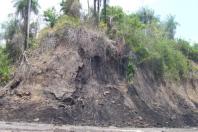Mission

The tar sands revolution has begun, and it's going global.
In the past decade, the price of a barrel of crude oil on the world market has gone up to roughly $100 US a barrel. High prices and technological advances, have led to a vast expansion of tar sands extraction in Alberta, Canada. The mining areas are famous for their global ugliness, while the “in-situ” operations are less unsightly but contribute up to three times the carbon emissions of tar sands mining, which is already three times worse than conventional oil drilling.
Tar sands are now the number one source of crude oil in Canada, producing over 1.7 mn barrels per day (bpd). Some 70% of this supplies the United States, making Canada the largest supplier of the American economy. With lower costs, persistently high oil prices have made Canada's tar sands a preferred destination for almost every giant energy corporation on the planet.
The climate-changing emissions from the tar sands alone are potentially catastrophic. In the long term, the technological research conducted and deployed first in Canada may have an even greater impact.
Increasingly efficient extraction techniques pioneered in Canada in the last decade are fueling a global rush to extract tar sands and kerogen-based oil shale. That's the bad news. The good news is that -- aside from Venezuela, where it is not a new idea -- none of the large deposits of tar sands have gone commercial, and the oil shale developments are still few in number and small in scope. In many cases, there's still time to stop these developments.
Climate activists have made tar sands in Canada a major battleground in the fight to prevent run-away climate change. Canada's tar sands mining has attracted public opposition worldwide and is the subject of several major campaigns, but no major victories have been won so far, though the Keystone XL pipeline suffered one temporary setback. Most future expansion is slated to be from in-situ operations, which have the worst climate footprint of any form of bitumen extraction, up to nine times worse than conventional crude oil.
While huge numbers of people have mobilized to stop tar sands extraction in Alberta, global tar sands and oil shale extraction threaten to escape our notice, pushing us into climate collapse regardless of our efforts in North America.
Over 70 countries contain tar sands bitumen, and dozens more have kerogen-based oil shale. In many places, energy companies are vying to copy the Canadian model. Some of these plans, borrowing from Canadian-based technology, involve even more carbon-intensive developments than anything in Alberta.
The tar sands genie is at least partly out of the bottle in North America, but new tar sands and oil shale developments around the world will be much easier to stop before they start. Before oil companies gain a toehold is the best time for communities to act to stop these developments: before they are overwhelmed by "facts on the ground." Also, the inverse is true: If tar sands and/oil shale plans are stopped anywhere, they can be stopped everywhere.
Though not comprehensive, this website will track the worst forms of tar sands and related extraction on a global scale. Many of the largest energy corporations in the world are involved in tar sands and now oil shale extraction. Here, you'll find all the climate criminals in one place and begin to map their efforts. This site will also serve to connect resistance efforts globally. The energy companies have launched their dirty oil revolution on the international stage, and it is essential we meet them there.


